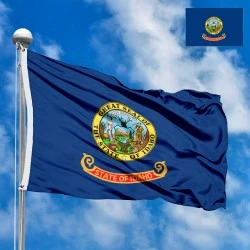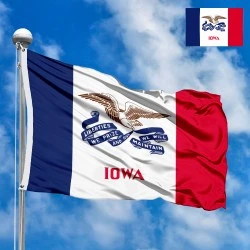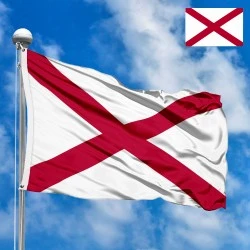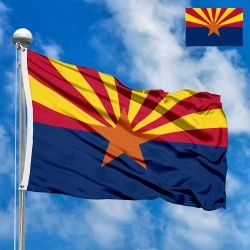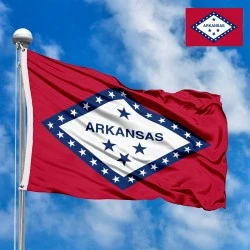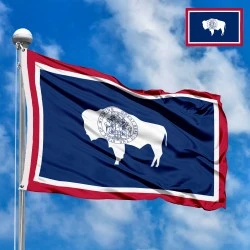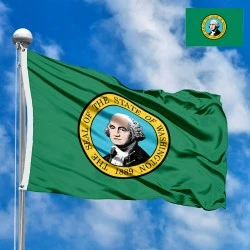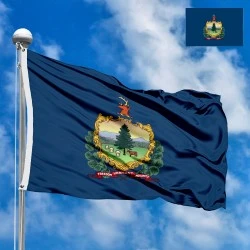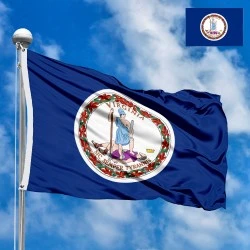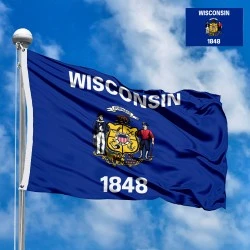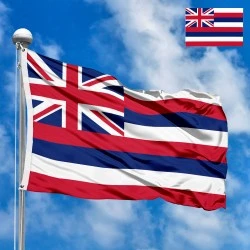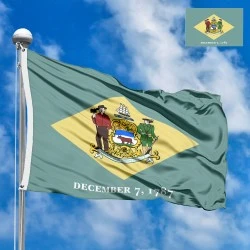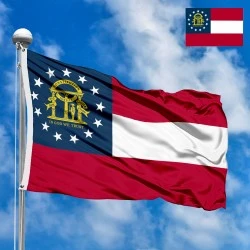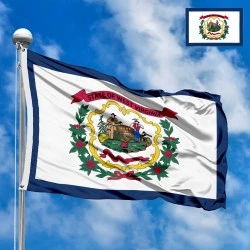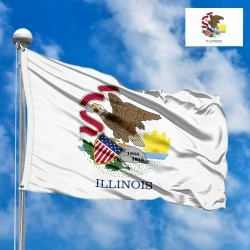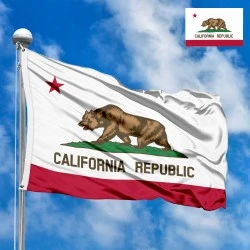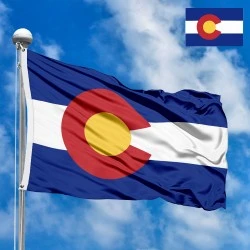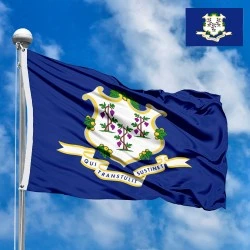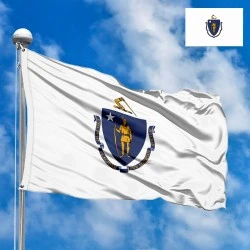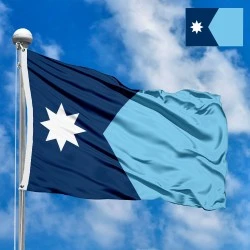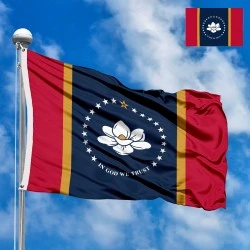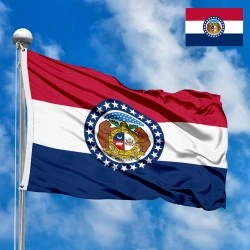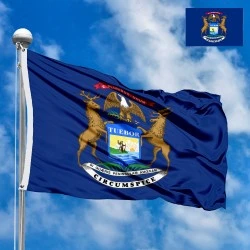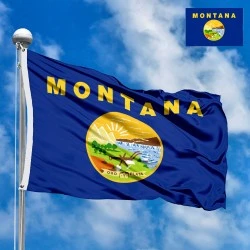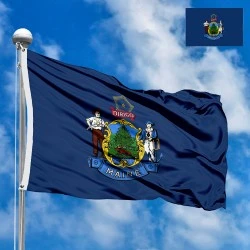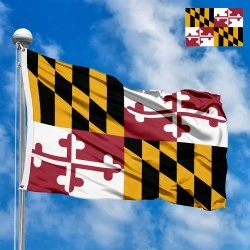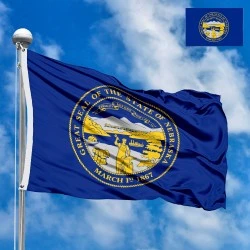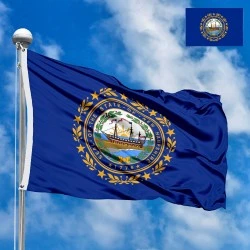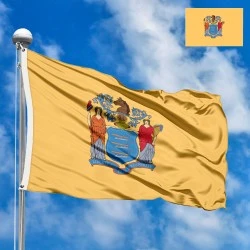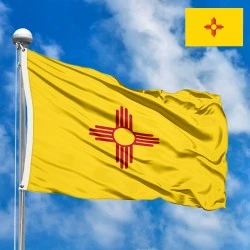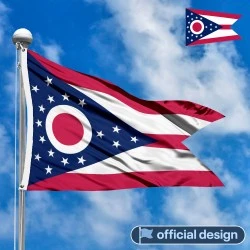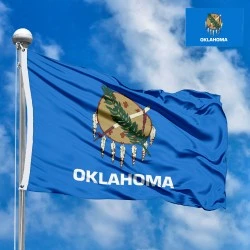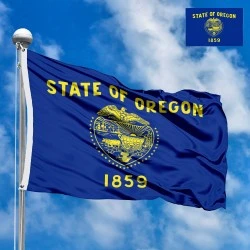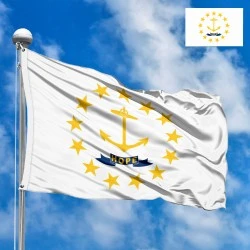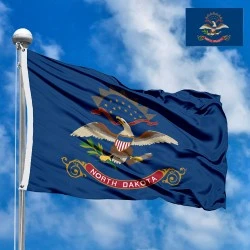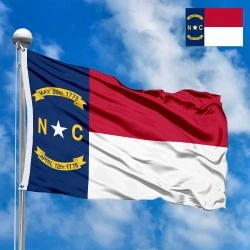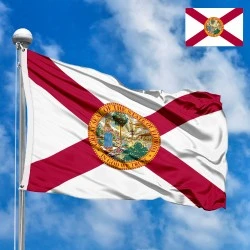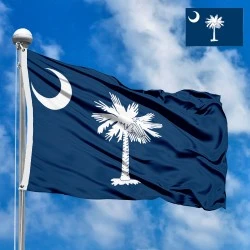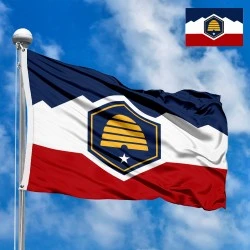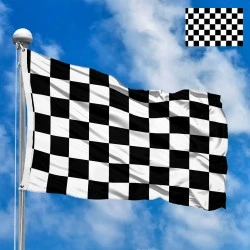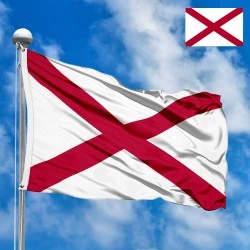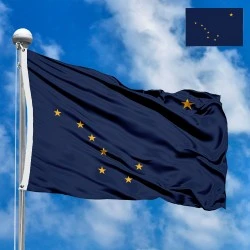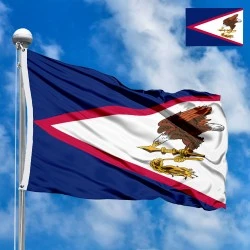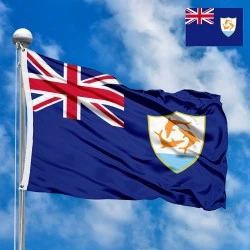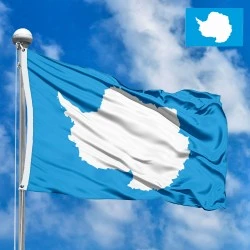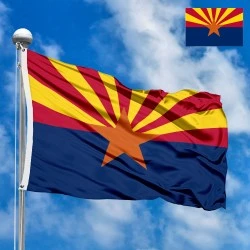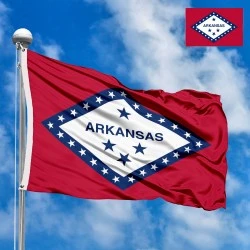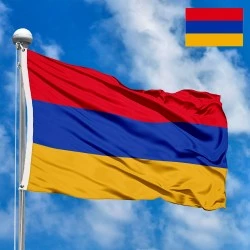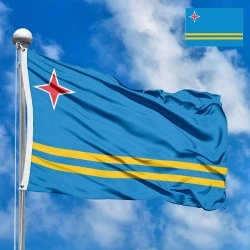Flag of Alaska (US state)
- Flag Type: US States
- Proportions (official): 125:177
- Official name: State of Alaska
- Local name: Alaska
- Capital: Alaska
- Large cities: Anchorage, Juneau, Fairbanks
- Population: 733 583 (2024)
- Area (km²): 1 723 337
- Highest point: Denali (6,190 m)
- Lowest point: Pacific Ocean (0 m)
- Dialing code: +1 (907)
Flag Information
General information
Demography and Culture
Economy and communications
- All Flags
- Flags of Countries by Continent
-
Flags of Organizations
- Flags of UN countries
- Flags of the European Union countries
- Flags of NATO countries
- Flags of the countries of the Organization of Islamic Cooperation
- Flags of the countries of the Organization of American States
- Flags of the Arab League countries
- Flags of the African Union countries
- Flags of the countries of the Union of South American Nations
- Flags of the Commonwealth of Nations
- Flags of the countries of the Secretariat of the Pacific Community
- Flags of the Nordic Council countries
- Flags of the Caribbean Community
- Flags of the countries of the Association of Southeast Asian Nations
- Flags of the East African Community
- Flags of the countries of the Organization of Turkic States
- LGBT Community Flags
- Historical Flags
- Ethnic Flags
- Flags of the USA (states)
Description
The flag of the state of Alaska stands out as one of the most beloved and symbolically powerful in the United States. Its simple, yet elegant design was created not by a government official or professional artist, but by a 13-year-old orphan in a contest. Adopted on May 2, 1927, while Alaska was still a territory, the flag's iconic image of stars on a blue field has become a timeless symbol of the state's pioneering spirit, its unique geography, and its bright future.
Flag Design, Symbolism, and Colors
The Alaska state flag’s design is a beautiful representation of the state's vast, northern landscape and its core values.
-
Colors and Field: The flag features a deep dark blue field, a color chosen to represent several key elements. It symbolizes the vast and deep blue Alaskan sky, the state's majestic seas, and the native forget-me-not, which is the official state flower. The dark blue color evokes the tranquility and vastness of Alaska’s wilderness.
-
The Stars: A total of eight gold stars are arranged on the blue field.
-
Ursa Major: Seven of these stars form the constellation Ursa Major, also known as the Great Bear. This constellation is a prominent feature in the northern sky and is a potent symbol of strength and the untamed wilderness of Alaska. The Great Bear is a common sight in the state's wildlife and folklore, making this a fitting emblem.
-
The North Star: The eighth star is the North Star (Polaris), which is larger and placed prominently in the upper right corner of the flag. It is the most important symbol of the flag. The North Star represents Alaska's status as the northernmost state in the Union. More importantly, it acts as a guiding star, symbolizing the state's future and serving as a guide for pioneers, explorers, and travelers, reflecting the spirit of adventure and resilience that defines Alaskans.
-
A Brief History of the Flag's Creation and Adoption
The story of the Alaska flag is a heartwarming tale that began with a flag design contest.
-
The 1927 Contest: In 1926, the Alaska Territorial Legislature organized a competition for Alaskan schoolchildren in grades seven through twelve to design a flag for the territory. More than 700 entries were submitted from all over the territory.
-
The Winner, Benny Benson: The winning design was created by a 13-year-old Native American boy named Benny Benson, who was living at the Jesse Lee Home for orphaned children in Seward. Benny's entry was simple but deeply meaningful. He chose the North Star for guidance and the Great Bear for strength, capturing the essence of his home.
-
Official Adoption: Benny's design was selected as the winner, and his explanation was so eloquent that it was included in the official description. The flag was officially adopted on May 2, 1927, while Alaska was still a territory. When Alaska was admitted to the Union as the 49th state on January 3, 1959, the territorial flag was retained as the official state flag, a tribute to its powerful symbolism and popular support.
Historical Context and the State of Alaska
The Alaska flag reflects the unique character of the region. The stars on a dark blue field evoke the long, dark, but star-filled Alaskan nights, a constant feature of life in the north. The use of the Great Bear and the North Star as symbols connects the flag to both the natural world and the human experience of navigating and surviving in the harsh but beautiful Alaskan wilderness. The flag’s simple, striking design stands in stark contrast to the often complex and seal-heavy flags of other states, making it a proud symbol of Alaska’s rugged individualism and independent spirit.
Significance for Residents
For the people of Alaska, the flag is a source of profound pride. It is a symbol of their home and a testament to the resilience and resourcefulness of its people. The flag's unique origin story, designed by a young boy, is a constant reminder that greatness can come from anyone, anywhere. It represents the guiding light of the North Star, a symbol of hope and direction for the future, and the strength of the Great Bear, representing the enduring spirit of Alaskans. The flag unites residents under a shared identity that celebrates their unique place in the world.
Interesting Facts
-
The designer, Benny Benson, received a $1,000 scholarship and an engraved watch as his prize. He used the money to pursue his education.
-
The flag is one of only a handful of U.S. state flags that does not feature the state's name, seal, or date of admission.
-
A song, titled "Alaska's Flag," was written by Marie Drake and set to music by Elinor Dusenbury in 1935, and it has since become the official state song.
-
The blue and gold colors were chosen for the flag, but Benny Benson's original entry simply described them as "blue and gold." The specific shades were later finalized.
-
Vexillologists (flag scholars) consistently rank the Alaska flag as one of the best-designed flags in the United States due to its simplicity, strong symbolism, and unique design.
-
Benny Benson's heritage was a blend of Aleut, Russian, and Swedish, making his design a symbol of the diverse cultural tapestry of the state.
In the demonstration images, full-size flags are shown with proportions of 2:3, and hand-held flags with proportions of 1:2.
Donation
Download
Completely free for commercial and non-commercial use (public domain).
You can freely use them in your news magazines, websites, software, mobile applications.
We appreciate a backlink to https://flagssite.com
Raster files - Flag of Alaska (US state) (PNG, JPG)
 Waving flag
Waving flag
- PNG format (transparent background), 72dpi, dimensions in Pixels (px), aspect ratio 3:4.
- 15х20 px
- 30х40 px
- 60х80 px
- 120x160 px
- 240x320 px
 Sizes:
Sizes:
"v15" - image size (by height); if necessary, replace with available: v15, v30, v60, v120, v240.
!!! For resizing, use the Latin (eng) keyboard layout.
<img src="https://flagssite.com/flags/v15/20546.png" alt="Flag of Alaska (US state)">
 Round flag
Round flag
- PNG format (transparent background), 72dpi, dimensions in Pixels (px), aspect ratio 1:1.
"d15" - image size (diameter); if necessary, replace with available: d15, d30, d60, d120, d240.
!!! For resizing, use the Latin (eng) keyboard layout.
<img src="https://flagssite.com/flags/d15/20546.png" alt="Flag of Alaska (US state)">
 Rectangular flag 2:3
Rectangular flag 2:3
- JPG format, 72dpi, dimensions in Pixels (px), aspect ratio 2:3.
"h30" - image size (by height); if necessary, replace with available: h15, h30, h60, h120, h240, h360, h480.
!!! For resizing, use the Latin (eng) keyboard layout.
<img src="https://flagssite.com/flags/h30/20546.jpg" alt="Flag of Alaska (US state)">

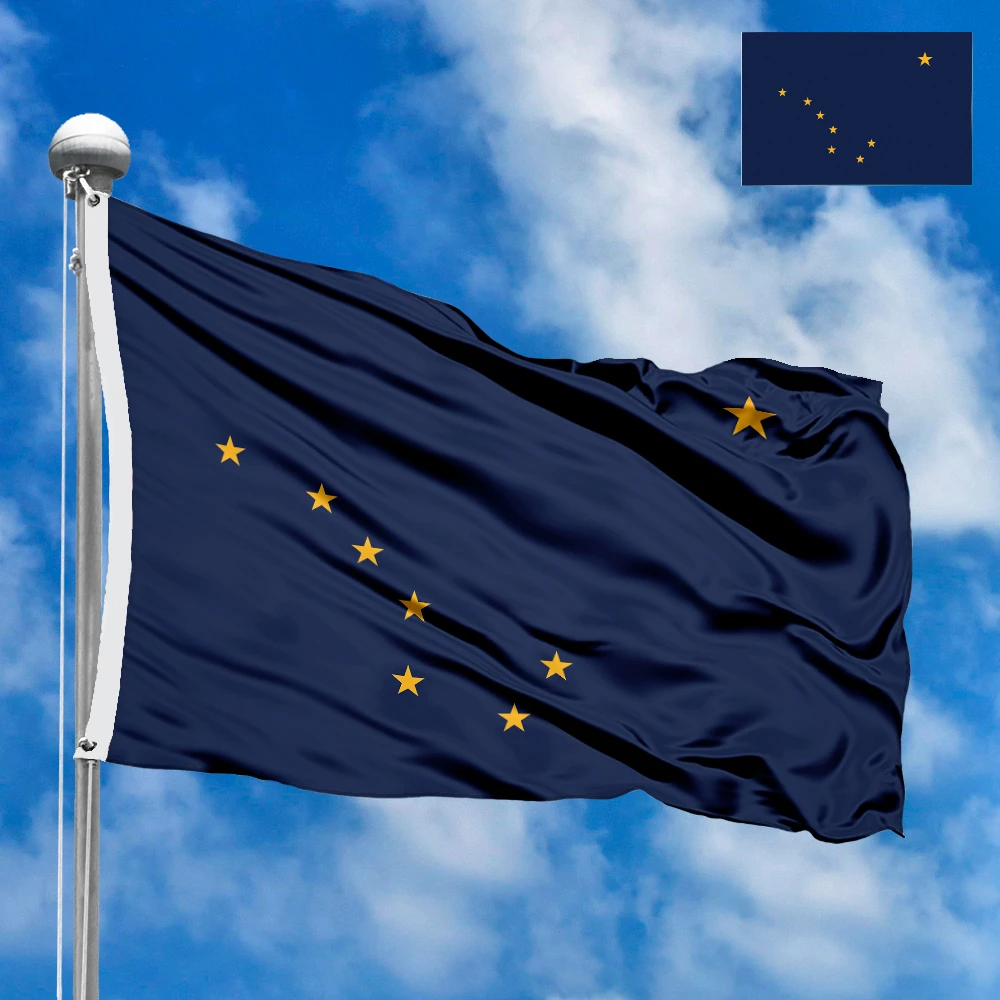




 Sizes:
Sizes:
 Sizes:
Sizes:
